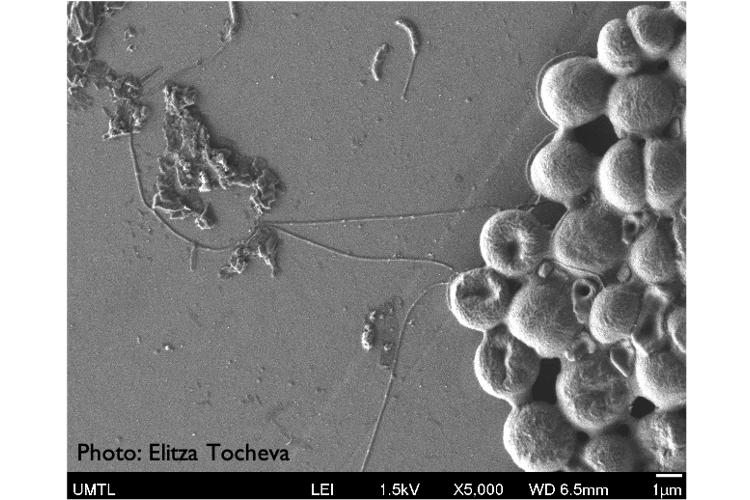- Share
- Share on Facebook
- Share on X
- Share on LinkedIn
Seminar
On November 17, 2025

Nicolas Tromas (CARRTEL, Université Savoie Mont Blanc)
Climate change and human activities are increasing the pressure on our water resources, challenging the preservation of water quality. Cyanobacteria are naturally present at low levels in water bodies. But due to increased eutrophication (nutrient input from agricultural or municipal releases) and climate change, some cyanobacteria bloom in aquatic ecosystems. These blooms are a considerable threat as cyanobacteria can potentially develop and release toxins which are harmful to human and animal health. Unfortunately, the intensity and frequency of these blooms are increasing likely due to human activities and are already generating economic and human health impacts with high societal costs. Monitoring, predicting and preventing blooms is therefore a priority, but also presents a significant challenge. Blooms are composed of a high diversity of cyanobacteria with different niches preferences and dynamics. Here, we hypothesized that blooms could be viewed as a biological disturbance, measurable by their impact on the surrounding microbial community. This disturbance could take different form – from taxa composition to genes frequency - and therefore could be used as toxic bloom biomarkers. To identify these early warning signals of a toxic bloom, we used data generated from the Genome Canada-funded ATRAPP project, focusing on eight lakes, for a total of 834 metagenomes. Our first set of analyses, Joint Species Distribution Modeling, aimed at improving our understanding of how toxins respond to environmental variables. We found that seasonality was a key variable in explaining the presence-absence and continued rise in cyanotoxins, followed by ammonia and total phosphorus concentrations. To further examine toxins seasonal succession and evaluate toxins co-occurrence, we ran a Latent Dirichlet Allocation. We found that certain toxins appeared earlier in the season in many lakes (microcystin-LR and –LY), and were replaced by a different community of toxins by summer (microcystin-LA, anabaenopeptins). To finally predict total microcystin concentrations and the time until toxicity reached the WHO guideline of >1 ug/L, we used of Bayesian Additive Regression Trees with microbial data as predictive variables. All observed species of cyanobacteria (Spearman correlation of observed vs. predicted values = 0.84) or the top 500 non-cyanobacterial species (correlation = 0.83) showed similar results. Predictions of the time until the WHO guideline was reached were more uncertain (correlation = 0.7 using cyanobacterial taxa or 0.67 using non-cyanobacteria), but still significant.
Contact: Natale Scaramozzino
Date
11:00
Localisation
LIPhy, salle de conférence
- Share
- Share on Facebook
- Share on X
- Share on LinkedIn